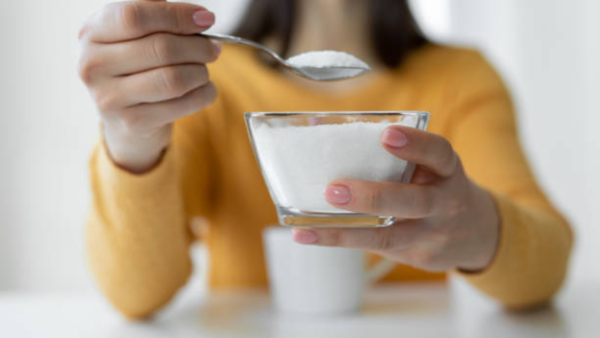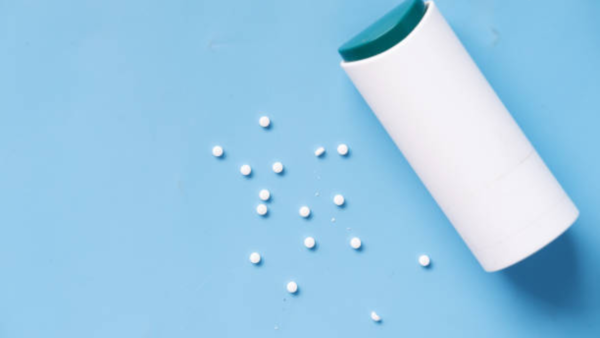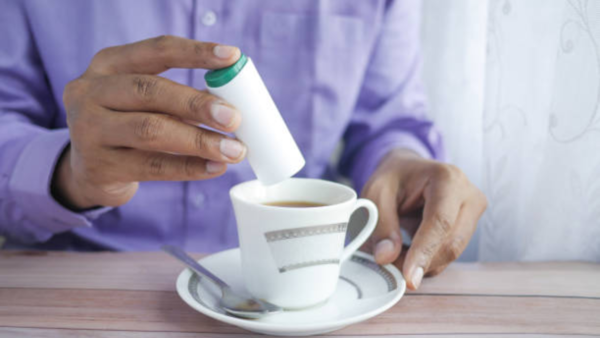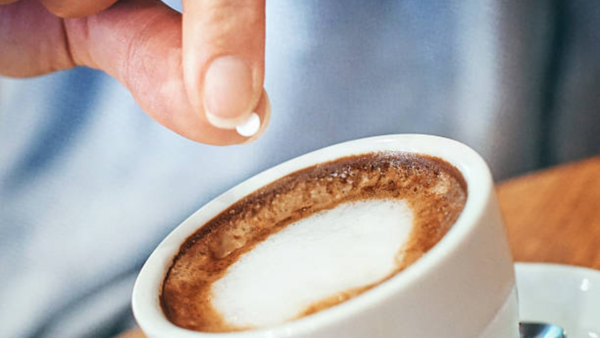The metaphor perfectly fits an industry which has thrived on the catastrophic downfall of sugar. Whether sugar is truly the villain it’s been made out to be remains an inconclusive debate, but the mere shadow of doubt has significantly contributed to the rise of several of its artificial substitutes over the years.
Almost every other food that we have on our tables today is laced with artificial sweeteners.From soft drinks to sherbat mixes and from protein powders to chyawanprash, anything that is ‘low calorie’, or ‘diabetic friendly’ is added with one or the other substitute for sugar. These artificial sweeteners are characterised by their ‘extra’ sweet taste, but have far fewer calories than sugar. There are six artificial sweeteners that have been approved by the Food and Drug Administration (FDA) of the United States: Aspartame, Sucralose, Saccharin, Acesulfame Potassium, Neotame, and Advantame. Here’s a detailed analysis of their composition, calories, and properties one by one.
Aspartame
: It is about 200 times sweeter than sugar. It was invented in 1965 by James M. Schlatter while he was researching anti-ulcer drugs. For a long time it was under the scanner as it was believed to be responsible for causing brain tumors and it was only in 1981 that it finally got approval. Aspartame is made from two natural amino acids, which are slightly modified, and is sold under brand names such as Sugar Free and Equal. The FDA (US Food and Drug Administration), WHO (World Health Organization), and European Food Safety Authority (EFSA) consider it safe if consumed in moderation. However, according to the NutriNet-Santé cohort study (France), it was concluded that adults who consumed higher amounts of aspartame had a higher chance of developing cancer than others.
Sucralose:
It is 600 times sweeter than regular sugar. In 1976 scientists created it by binding sucrose molecules with chlorine. It is an artificial compound chemically derived from sugar and is sold under the brand name Splenda. A 2022 study published in the journal Microorganisms pointed out that this sweetener can adversely impact gut fauna. There are also other studies that have indicated its potential to cause DNA damage and cause diseases like cancer. However, the National Cancer Institute (NCI) is apparently waiting for more evidence to link it to human cancer. In light of the World Health Organization’s recent stance on declaring aspartame a Class B carcinogen, the NCI is reviewing the existing data on artificial sweeteners and cancer risk.
Saccharin:
It is the oldest and simplest artificial sweetener still in common use. 400 times sweeter than sugar, it has a bitter aftertaste. It was discovered in 1879 by Constantin Fahlberg, who worked on coal tar by-products! Some studies have linked it to cancer in rats. It was banned by the US government in the 1970s, but due to the intervention of Congress, it became available with a warning label.
Acesulfame Potassium:
This was accidentally discovered by a German scientist who was working on oxethazaine dioxides. With a bitter after taste, it is a calorie-free sweetener. Some short-term studies have linked it to disruption of gut flora and weight gain. More research is needed in this regard.
8 simple tips to curb your sugar cravings
Neotame:
This one has been around since the 2000s and is called a sweetness powerhouse as it is nearly 8,000-12,000 times sweeter than sugar. Neotame, an artificial sweetener available for use in food products for which aspartame is inappropriate, may damage the intestine, according to a 2024 study from Anglia Ruskin University in Cambridge, UK. The research found that neotame can damage or change healthy cells in human intestinal walls, leading to IBS.

Advantame:
It was approved by the US FDA in 2014. It is the newest artificial sweetener and is staggeringly 20,000 times sweeter than sugar. It has no aftertaste and is more stable than aspartame. So far, no side effects have been found, but more long-term research is needed to ascertain its potential impact on human health. The European Food Safety Authority (EFSA) has set 5 milligrams per kilogram of body weight per day as an acceptable daily intake (ADI) to ensure safety.

Is stevia too an artificial sweetener?
Stevia is a natural sweetener made from the leaves of the Stevia plant that has its origin in South America. Traditionally stevia has been used as a sweetener in countries like Paraguay and Brazil. Nearly 300 times sweeter than sugar is artificially extracted and purified for use in food products. It is generally considered safe. But some people may experience digestive issues, such as bloating or diarrhea, especially if consumed in large amounts hence excessive use is not recommended.
What about Monk fruit sugar? Is it natural?
Monk fruit sugar, also known as luo han guo, is derived from the monk fruit (Siraitia grosvenorii), a small green melon native to southern China. Monk fruit has been used for centuries in traditional Chinese medicine and is now gaining popularity as a sweetener due to its natural origin and health benefits. It is 300 times sweeter than sugar. Generally considered safe for consumption it has not been linked with known serious side effects. The FDA has recognized monk fruit extract as Generally Recognized As Safe (GRAS). Commercial monk fruit sweeteners are often mixed with other ingredients like erythritol or dextrose to balance sweetness and texture. It’s important to read labels to understand what you are consuming.
Good, bad or ugly?
Artificial sweeteners pose few risks and may even have benefits for weight loss, blood sugar control, and dental health. Studies also show that replacing regular soft drinks to sugar-free versions can decrease body mass index (BMI) by up to 1.3–1.7 points. Artificial sweeteners are generally considered safe when consumed within recommended limits. They offer a low-calorie or calorie-free alternative to sugar, which can be beneficial for people trying to reduce calorie intake. However, some studies suggest they may have potential health risks if consumed in excessive amounts or by certain individuals, such as affecting gut bacteria or potentially contributing to metabolic disorders. Moderation is key, and it’s essential to consider individual health factors and preferences when choosing sweeteners. Instead try using natural sweeteners.
Celebrity nutritionist, Sandhya Gugnani

Who should consume them?
The simple answer is-only those people for whole sugar is a forbidden fruit. Diabetics who crave sweets, can occasionally consume natural substitutes in moderation. A pinch of stevia or monk fruit sugar in a cup of tea might be harmless, but a bowl of Stevia Gulab Jamun may actually not be so good!
The reason to avoid white sugar should be the reason to avoid sweeteners too
While sugar is definitely bad for diabetics, it is a well established fact. But the question of the safety concerns of consuming sugar in moderation has now become an object of debate. It has been used for centuries and it is from the past 4-5 years that we have woken up to its monstrous aspect of being cancer causing, DNA damaging etc etc (Inputs taken from WhatsApp university).

No research till date has linked sugar to cancer. But does it mean that we can consume as much sugar as we want? Even if sugar can’t cause cancer, it’s wise to limit added sugar. Studies suggest that one should not have more than 6 teaspoons of sugar a day if you’re a woman and 9 if you’re a man. “Middle Path” as Lord Budda said is a solution to all problems.






